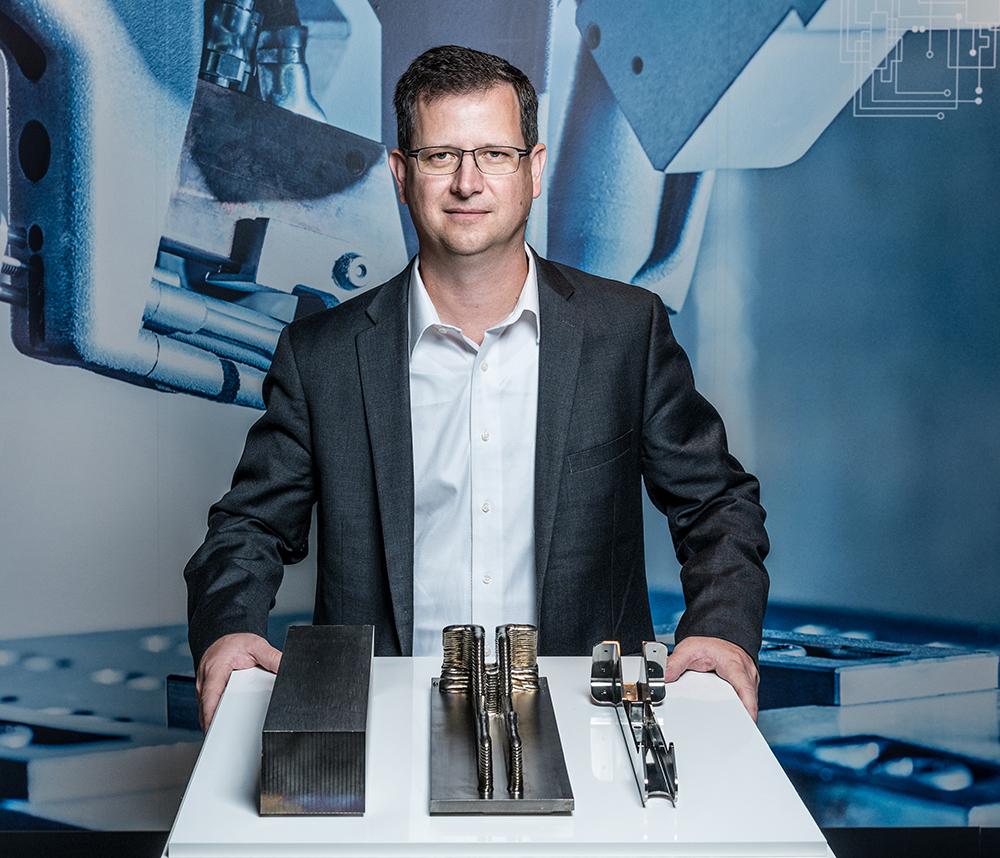
Michael Canario, CEO of Norsk Titanium
Additive metal manufacturing has made rapid progress in spacecraft that do not carry passengers, but certification standards for passenger-carrying commercial aircraft are much tougher. Norsk Titanium put the first additive metal structural part on Boeing 787s in 2017, added more 787 parts later and continues to develop additive metal parts for commercial aircraft. Norsk Titanium CEO Michael Canario speaks with Aviation Week about the prospects for additive metal in commercial aircraft.
How did the pandemic affect progress on additive metal manufacturing for aerospace?
There was definitely an impact to the commercial side of the business as the OEMs paused to adapt to the uncertain environment. Norsk took that time to focus on our defense and industrial customers. Now that air travel is returning to pre-pandemic levels, the OEMs are increasing production rates and looking for solutions to raw material scarcity and, of course, cost-out opportunities. Additive is definitely part of the solution set, and we are seeing the OEMs investing more in additive.
You use direct energy deposition (DED) to make titanium parts for aircraft. What are the advantages of DED for commercial aircraft, and for which parts is it best suited? How large is the potential market for DED titanium in commercial aviation?
The main advantages of DED are always going to be cost and schedule. At the same time, we also offer our customers a much more efficient alternative to existing raw material supply chains. Norsk’s wire based rapid plasma deposition [RPD, a type of DED] process uses significantly less raw material and energy, thus reducing the risk to supply chain disruption. Wire DED processes are directly applicable to large structural components that would traditionally be produced as a forging or casting. There will undoubtedly be applications better suited to traditional production methods, but over time, we see wire DED displacing a significant amount of today’s structural forging and casting market. In addition to new part production, there is also a significant MRO opportunity for DED processes. We recently re-manufactured articles for Kongsberg Defence & Aerospace. The adaptation of the RPD process we used is directly applicable to the repair market.
So far, I believe you have used DED to replicate parts made by conventional methods. Do you plan eventually to use the design freedom offered by additive to design entirely new parts?
Absolutely. We have purposely taken a measured approach in introducing our RPD process with the OEMs. First, we need to get the designers and regulators familiar with the technology by directly replacing existing parts, then we will move into more complex parts designed from the outset to take full advantage of the technology. We have already seen OEMs moving in this direction, using our process to print small flanges on assemblies that were previously riveted together.
What are the major hurdles that are slowing adoption of additive metal production for commercial aviation? How does Norsk plan to overcome these hurdles?
We have spent more than 15 years and the majority of our investment on developing our process and proving that it is controlled and repeatable. The OEMs and regulators have decades of process control experience in traditional manufacturing processes. With additive’s ability to record every manufacturing process parameter and determine the impact on material performance, we have been able to achieve that same level of understanding in a dramatically shorter time.
How long do you estimate it will take customers and regulators to accept additive metal use in commercial aviation as readily as they accept casting metal parts?
The OEMs have material specifications in place for wire-based DED processes today. As more vendors qualify to those specifications, the Tier 1 contractors will want to take full advantage of the raw material, energy, cost and schedule savings. This will unfold over the next few years as the OEMs work technology insertion on existing products. As the OEMs introduce new airframes later this decade, I fully expect additive to be included as a baseline material in the design.





